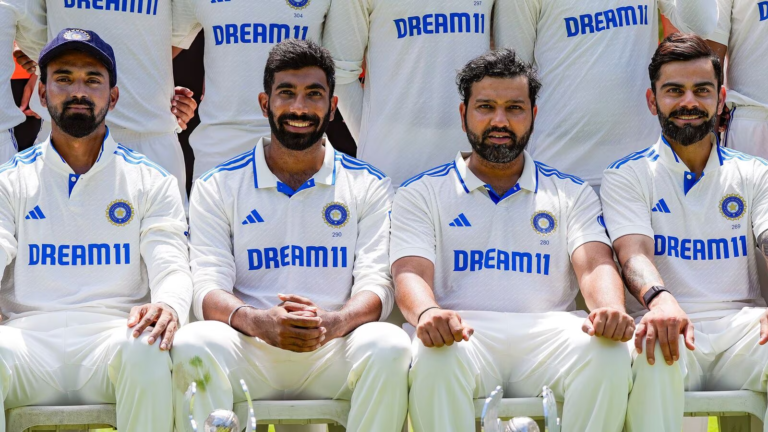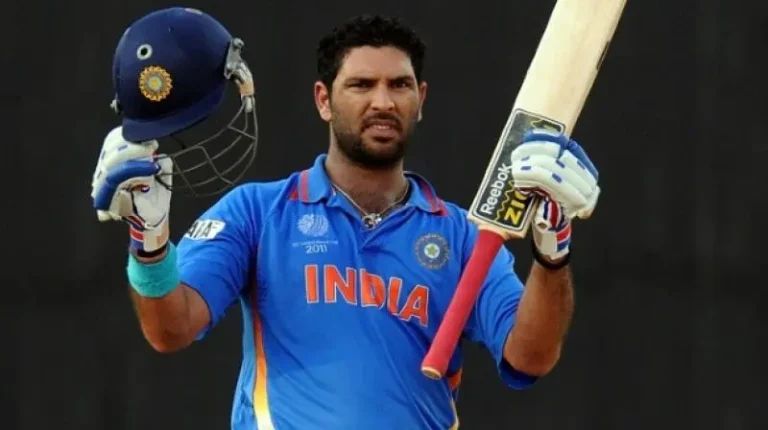Cricket, a sport known for its complex gameplay and deep-rooted history, has become a part of cultures all over the world. From its beginnings to today’s fast-paced T20 matches, cricket has changed a lot over time, but it still keeps its core. Let’s take a closer look at cricket rules including how the game works, and the strategies behind it.
Introduction to Cricket
History of Cricket
Cricket started in England back in the 16th century when it was a game enjoyed by wealthy people for fun. It later spread across the British Empire and to other places, becoming a symbol of friendship and competition.
Global Popularity of Cricket
What started as a very English sport has now become popular all around the world. Countries like India, Australia, and Pakistan are crazy about cricket, treating it almost like a national obsession.
Understanding the Basics
The Essential Equipment
Cricket doesn’t need much equipment, just a bat, a ball, and some protective gear for the players. Batsmen use a bat, usually made of willow, to hit the ball. The ball is thrown by the other team and is usually made of cork and leather.
The Playing Field: Pitch, Crease, and Boundary
At the heart of cricket is the playing field, called the pitch. It’s marked with lines like the crease and boundary. The condition of the pitch, like how long the grass is or if it’s wet, can change how the ball moves during the game.
Rules of the Game
Batting Rules
Cricket rules for batting focus on how a batsman can score runs and protect their wicket from being knocked down by the bowler. The primary objective of batting is to score runs by hitting the ball and running between the wickets. Batsmen can also hit the ball to the boundary to score four runs or over the boundary without it bouncing to score six runs. However, if the ball hits the batsman’s body or equipment and would have otherwise hit the stumps, the batsman can be out. Additionally, if the batsman hits the ball and it is caught by a fielder before it touches the ground, the batsman is also out. Learn cricket and its fun to play and watch game.
Scoring Runs
One of the Cricket rules is Batsmen try to score runs by hitting the ball and running between the wickets. They can also score runs by hitting boundaries, like fours and sixes, where the ball crosses the boundary rope.
Out, Not Out
Batsmen can be dismissed in several ways, such as being bowled, caught, or trapped LBW (leg before wicket). Knowing these dismissal rules is important for players to avoid getting out and keep their innings going.
Bowling Rules
Types of Deliveries
Another cricket rules is Bowlers use different types of deliveries, like fastballs, spinners, and slower balls, to trick batsmen and get them out. Being able to bowl different types of deliveries is important for bowlers to keep batsmen guessing.
Wickets and Their Importance
Getting wickets is the main goal for bowlers because it makes it harder for the batting team to score. The stumps, which are made up of three wooden posts with bails on top, are what bowlers aim to knock down.
Fielding Rules
Positions and Responsibilities
Most tactical cricket rules is Fielders are placed strategically around the field to stop runs and catch the ball. Each fielding position has its job, and players often focus on certain positions depending on their skills and how athletic they are.
Fielding Strategies
Fielding captains come up with plans to take advantage of the weaknesses of the other team’s batsmen and put pressure on them. They do this by placing fielders in strategic spots and making quick moves to catch or stop the ball. Good fielding can change the course of a game and give the fielding team an advantage.
Gameplay Dynamics
Innings Structure
Cricket games are split into innings, where each team gets to bat and bowl. In Test matches, teams bat twice, but in limited overs games like One Day Internationals (ODIs) and T20s, each team usually bats once.
Scoring Dynamics
Runs, Extras, Boundaries, and Sixes
The main goal of the batting team is to score runs, adding to their total score with each run they make. Extras, like wides and no-balls, also give the batting team more runs. Boundaries, such as fours and sixes, are great shots that earn batsmen even more runs.
Strategic Breakdown
Strategy is really important in cricket, and teams use different tactics to try to beat their opponents. Building an inning carefully, putting fielders in the right spots, and coming up with clever bowling plans are all important parts of playing well.
Separating the Strategies
Batting Strategies
Opening Batsmen Tactics
Opening batsmen are super important because they set the tone for their team’s innings, especially when the conditions are tough and they’re facing a brand-new ball. Their main job is to deal with the new ball well and make sure their team gets off to a good start, setting things up nicely for the rest of the batting lineup.
Middle Order Approach
Middle-order batsmen have a crucial role in stabilizing the innings if the team loses early wickets and then speeding up the scoring later on. They need to be flexible and good at taking singles to build partnerships and keep the momentum going.
Tailenders' Role
Tailenders, who usually bat at the bottom of the batting order, are really important because they can score some unexpected runs and annoy the other team’s bowlers. They’re good at batting with the lower-order players and getting those extra runs that can make a big difference in whether their team wins or loses.
Bowling Strategies
Pace vs. Spin Tactics
Bowling attacks use both fast and spin bowlers to try to unsettle the other team’s batsmen and get them out. Fast bowlers rely on their speed and bounce to scare batsmen, while spinners use clever tricks and deception to trick them.
Variations and Mind Games
Bowlers use different tricks, like yorkers, bouncers, and slower balls, to confuse batsmen and stop them from getting comfortable. Being mentally strong and able to predict what the batsmen will do is important in the mind game between bowlers and batsmen.
Fielding Strategies
Defensive vs. Attacking Fields
Fielding captains decide where to put fielders based on whether they want a defensive or attacking setup, depending on how the game’s going and what the other team’s like. Defensive fields are meant to stop the other team from scoring too many runs, while attacking fields try to make the other team play risky shots and get them out.
Capturing Key Wickets
Fielding teams focus on getting important wickets to take charge of the game and make the batting team nervous. By going after the weaknesses of the other team’s batsmen and taking advantage of chances on the field, teams can shift the momentum of the game in their favor.
Evolution of Cricket Strategies
Technological Innovations
Impact of Technology on Umpiring
Cricket rules evolve with the use of technology, such as Hawk-Eye and UltraEdge, has changed how umpires make decisions in cricket matches. Video reviews let teams question decisions made by on-field umpires, making sure that calls are more accurate and fair in crucial situations.
Data Analytics in Cricket
Data analytics has become a game-changer in cricket, giving teams important information about how players perform, what strategies opponents use, and the conditions of the match. From managing player workload to studying the other team, using data is changing how teams get ready and plan for games.
Tactical Shifts Over Time
From Test Cricket to T20 Revolution
T20 cricket has completely changed how cricket is played and seen. It focuses on hitting the ball hard, aggressive bowling, and creative fielding. This new style has brought in lots of new fans and players, shaking up the old ways of playing cricket and following cricket rules.
Adaptive Strategies in Modern Cricket
In today’s cricket, the best teams are the ones that can change with the times. They come up with new tactics to handle different challenges or use new tools to stay ahead. Being able to adapt is what keeps teams successful in the ever-changing world of cricket.
The Psychological Aspect
Cricket requires more than just physical strength—it also needs mental toughness and resilience. Players have to deal with tough situations, harsh weather, and the mind games played by their opponents. Whether it’s a batsman staying focused against a tough bowler or a bowler trying to outsmart the batsman, cricket challenges players mentally as much as it does physically.
Global Influence and Cultural Significance
Cricket doesn’t just stay on the field—it touches lives and cultures all over the world. From the bustling cricket scenes in Mumbai to the laid-back matches in the Caribbean, the sport means a lot to millions of people. Moments like the “Miracle of Headingley” and the “Tie at Eden Gardens” aren’t just sports stories—they’re part of our shared history and stories we pass down through generations.
Challenges and Controversies
Cricket faces its own set of problems and controversies, just like any other sport. Issues like match-fixing scandals, mistakes by umpires, and debates between those who like the old way of playing and those who want new formats have caused some damage to cricket’s reputation. But cricket keeps going strong because it learns from its errors and keeps updating Cricket rules, which is why it’s still so popular.
Future Prospects and Trends
Cricket is always changing, and there’s a lot to look forward to in the future. New formats like The Hundred and T10 Cricket are bringing in fresh fans and shaking up the old ways of playing. With advancements in technology like augmented reality and artificial intelligence, both fans and players can expect some exciting changes that will make the game even more immersive and thrilling.
Conclusion
Cricket’s complications are as varied and engaging as the sport itself. From its simple beginnings on local cricket fields to its worldwide recognition as a multi-billion-dollar enterprise, cricket has stood strong over the years, evolving and adjusting to match the needs of an evolving world. By exploring the complexities of cricket rules, gameplay intricacies, and strategic subtleties, we develop a richer understanding of the elegance and depth of this enduring game.
FAQs
What are the basic rules of cricket?
The basic rules of cricket involve two teams taking turns to bat and bowl, with the batting team aiming to score runs and the bowling team seeking to dismiss the batsmen.
How is scoring done in cricket?
Scoring in cricket can be achieved through various means, including hitting the ball and running between the wickets, hitting boundaries, and running penalties awarded by the umpires.
What are some common bowling strategies in cricket?
Common bowling strategies in cricket include using different types of deliveries, varying pace and trajectory, and targeting specific areas of the pitch to deceive and dismiss batsmen.
What batting techniques are essential for success in cricket?
Essential batting techniques in cricket include proper footwork, a solid defensive stance, and the ability to play attacking shots when opportunities arise.
How do fielding positions impact gameplay in cricket?
Fielding positions play a crucial role in cricket, with teams strategically placing fielders around the field to maximize their chances of taking wickets and preventing runs.

Hi, I am Aanya Gupta, a passionate writer with a focus on sports and betting. With three years of experience in the dynamic world of news sports, I’ve honed my skills in content creation and blogging. My journey began three years ago when I discovered my love for writing about sports, and since then, I’ve immersed myself in the world of sports journalism.







